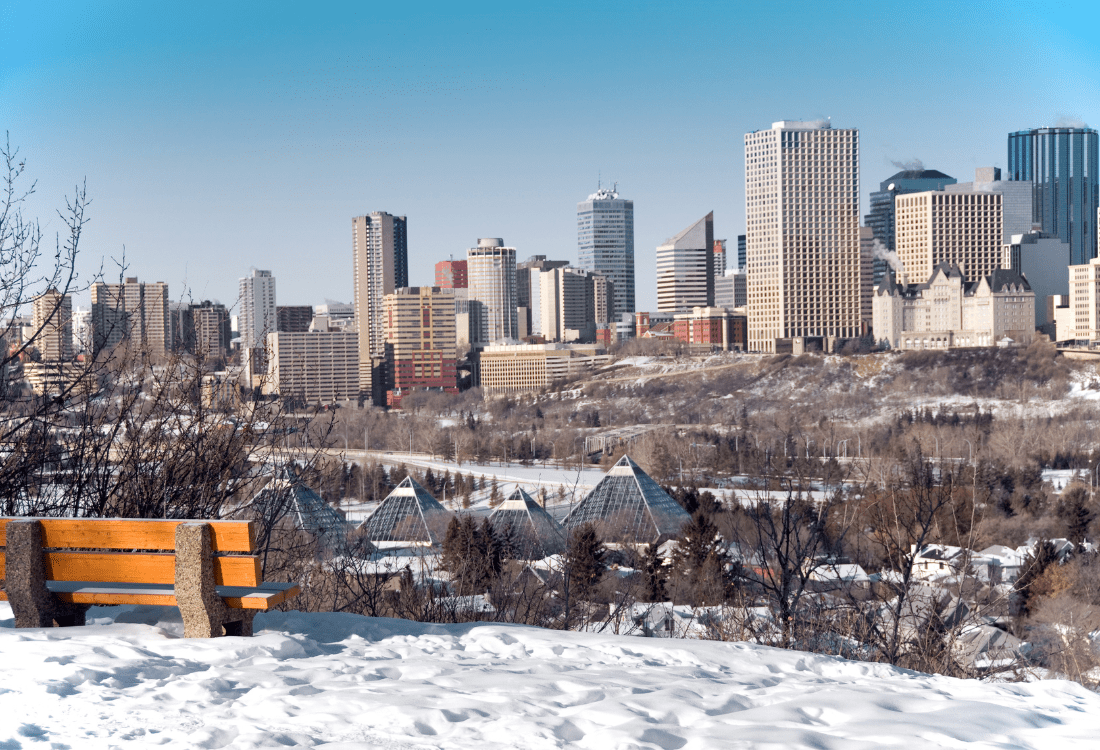
Adapting to the Canadian Weather: A Guide For British Expats
‘Eight feet of snow in the winter, wildfires and mosquitoes in the summer.’ The Canadian climate is subject to some of the most unfair generalisations of Canada in the eyes of Brits and other foreigners. The reality is quite different, with Canada encompassing several distinct climatic zones across the country, from the arctic and subarctic North and North West, to the mild maritime Pacific and Atlantic coasts, to the hot and dry prairie climate of the central regions of Alberta, Saskatchewan and Manitoba.
Popular relocation cities like Toronto and Montréal, for example, have intensely humid summers and cold snowy winters, with seasonal variation quite different to that of the UK. Meanwhile, expats in British Columbia may experience mild winters and moderate summers remarkably similar to home, but with less rainfall.
Nevertheless, there is no denying the quite stark contrast between many parts of Canada and the mild, maritime-influenced climate of the UK. Acknowledging and respecting these differences is the key to thriving in your new environment when moving from the UK to Canada.
Being Prepared For The Canadian Weather
The beauty of Canada comes with the caveat of various extreme weather conditions, including (depending on where you live) seasonal blizzards, ice storms, and extended heatwaves. The secret to adapting to these conditions is preparation. During winter, for instance, ensure that your home is well insulated to maintain warmth without excessive heating bills, and it’s worth keeping an emergency kit stocked with essentials, and invest in quality snow removal tools, if you find yourself snowed in.
Summer in regions such as southern Ontario and Québec can also bring heatwaves, so you may need to invest in air conditioning, pay attention to staying hydrated, and understand local heat alerts.
One Of The Phrases You May Hear Uttered In Canada Is That There Is No Such Thing As Bad Weather, Only Bad Clothing.’
In advance of your move, it’s worth investing in high-quality clothing and the appropriate gear needed to cope with the weather. Winter in Canada demands layers – starting from thermal underwear, and adding insulating layers, to finish with a waterproof or windproof outer layer. Accessories like gloves, warm hat, and waterproof boots may also be winter essentials in some parts of the country. When hiking or exploring nature, always be prepared for sudden weather changes.
Embracing The Canadian Weather
Once suitably equipped, you’ll be able to enjoy the opportunities and pleasures the Canadian climate has to bring. This truly is a beautiful and unique country, and each season brings a range of outdoor activities:
1. Winter – skiing, snowboarding, ice skating, and snowshoeing are just a few ways to enjoy the snowy Canadian landscape, and many Canadians actively embrace the cold rather than hiding from it, participating in various winter sports and activities.
2. Spring – spring is a great time for hiking in Canada, witnessing the country’s stunning natural beauty as it awakens.
3. Summer – make the most of the warm weather with camping, canoeing, cycling, and spending time in Canada’s vast and unspoiled national parks.
4. Autumn – witness the spectacular foliage changes with a hike or scenic drive. The autumn or fall is also an excellent time for photography enthusiasts and birdwatchers
Find Out More
Download a copy of our free Guide To Moving To Canada to find out more about our relocation services and how an international movers company can help facilitate your big move to Canada.
Image Source: Canva


